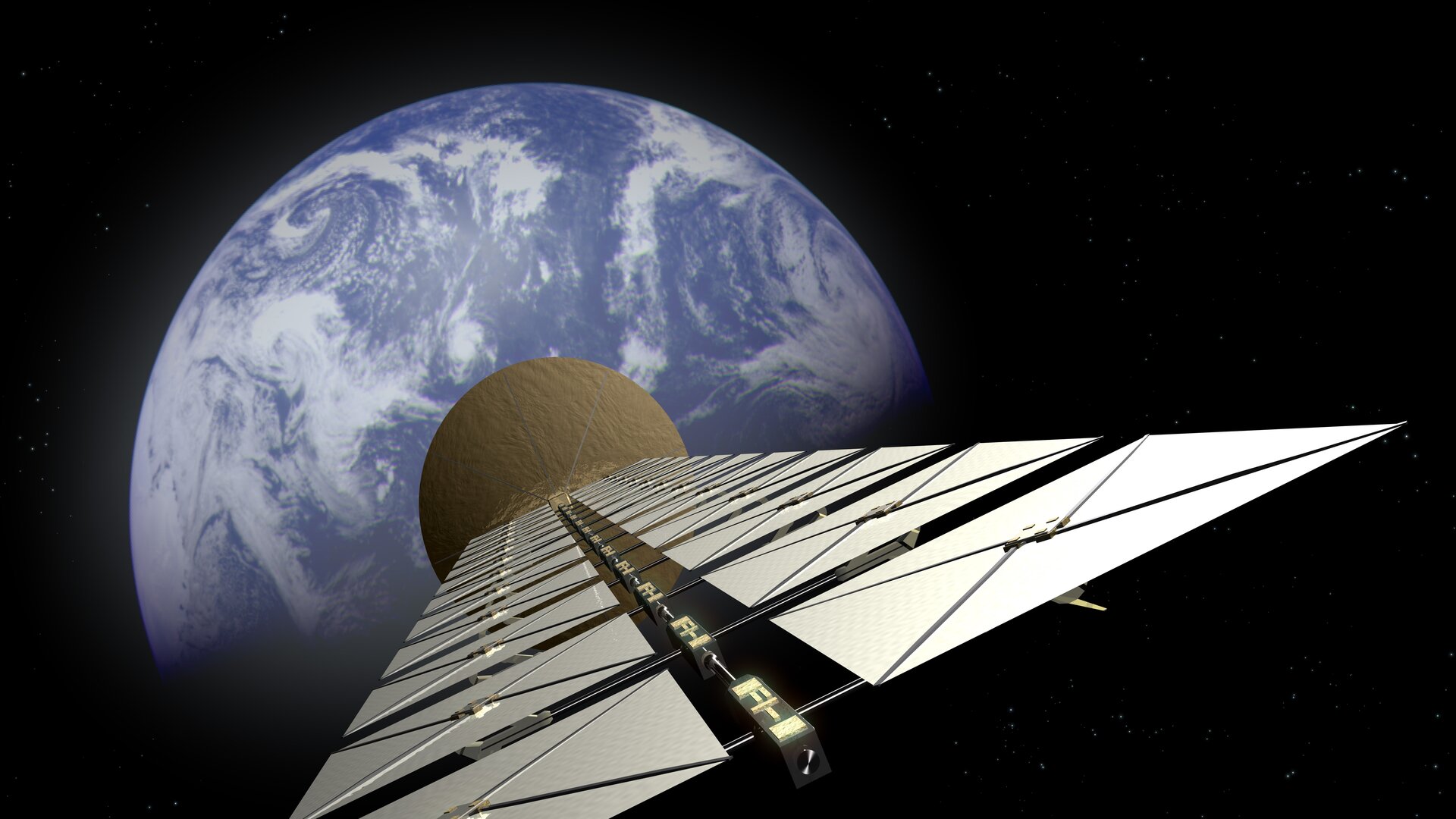ESA reignites space-based solar power research
10/01/2022
39 views
2 likes
We urgently need solutions to tackle climate change on Earth. Meanwhile, the space sector is working hard to make space exploration more sustainable. ESA is targeting both ambitions by enabling European academia and industry to take further steps towards space-based solar power (SBSP).
For satellites orbiting high above Earth, outside the atmosphere, sunlight is on average more than 10 times more intense than on the ground in Europe. SBSP satellites could also face the Sun all day every day to continuously capture the maximum amount of light possible. The satellites could then beam energy down to Earth, the Moon or other planets.
But SBSP technologies are still in their very early stages of development. ESA hadn’t seriously investigated the topic since 2006, so ESA’s Discovery programme recently called for ideas that would answer the question: how do you convert a large amount of solar energy into a useful form and beam it down to Earth or another planetary surface, as efficiently as possible?
This question is very timely. Since COP26, there has been lots of talk about technical solutions to reduce carbon emissions and reach net zero. Meanwhile, access to space has become easier, cheaper and more sustainable – reducing one of the biggest hurdles to achieving SBSP.
With the OSIP call for ideas, ESA aimed to ignite a coordinated initiative to reassess SBSP and see how we can move towards demonstrating its potential for providing inexhaustible, continuously available, clean energy on Earth.
Of 85 ideas received, 13 were selected for funding. The activities have all recently launched to explore a diverse range of SBSP technologies, including how to more efficiently collect sunlight and how to safely transmit this power to Earth, as well as how to manufacture and assemble these huge solar power satellites, control them and keep them in the right location.
“We saw a really great mix of people interested in this topic – we had ideas from academic institutions, start-ups and traditional space companies,” says Advenit Makaya. “It’s good to see that so many entities are still interested; OSIP enabled us to connect with them and gather this rich collection of ideas from interested and experienced parties.”
Planting seeds in the commercial landscape
SBSP is an extremely interdisciplinary topic, involving a wide range of technologies at various stages of development. With this call, ESA reached a variety of organisations to gather around a common theme.
“The organisations all look at the problem from a different perspective,” says Advenit. “For example, some elements of SBSP are still in the very early stage, and therefore need academic research. Meanwhile, some need the ingenuity of start-ups, some need a good level of experience from space companies, some need the outside perspective and expertise of non-space companies (such as from the energy sector), and some need a system-level overview that can be provided by large system integrators.”
With these 13 activities, ESA is helping companies enter this emerging field of space technology development. The activities are small seeds to kick off important technological developments that will fit into a much bigger picture. The manufacturing and maintenance of SBSP will generate a commercial market that will benefit Europe; ultimately, this topic will be all about the commercial service of generating clean energy to serve society’s needs while protecting our planet from further damage.
What else is ESA doing to advance SBSP?
In December 2021, ESA hosted an international workshop on Space-based Solar Power for Net Zero by 2050, which attracted more than 360 people from both the space and non-space sectors. The goal was to explore the vital role that SBSP could have in the fight against climate change, and how it could help shape ESA’s future programmes.
“The more we learn about space solar power, the more it appears to be a credible way to provide large-scale, clean and dispatchable energy for our future needs on Earth,” said ESA researcher Angeliki Kapoglou, who was involved in planning the workshop. “This workshop was only the start of a fascinating journey.”
Furthermore, as an outcome from the ESA Preparation programme’s ‘What’s Next?’ call for ideas, a cost-benefits analysis study to evaluate the ‘business case’ for SBSP as a potential new source of clean energy for Europe is scheduled to start in early 2022. The results of the study will also help inform the next steps to be taken by ESA and Europe for this promising new capability.
For all the latest Technology News Click Here

